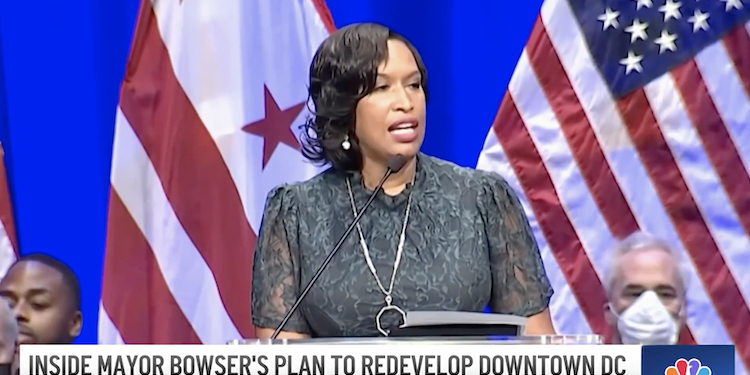They struggled to be heard from the back of the room, shouting as Mayor Muriel E. Bowser (D) tried to ignore them.
“Are you on the side of billionaires, or the working-class people of the District of Columbia?” one person yelled, as a demonstration broke out at the tail end of a budget forum Bowser held before releasing her proposal.
It was Dana White, advocacy director at Miriam’s Kitchen, which aids the homeless. White and more than a dozen demonstrators had come to reject what they saw as a paradox: How could Bowser ask residents to brace for budget cuts in a time of fiscal scarcity, when she had just offered $500 million to billionaire Ted Leonsis to renovate Capital One Arena downtown?
The moment reflected arguably the greatest challenge of Bowser’s third term: With city finances tumbling downhill by most estimates, she is betting big on investing in downtown to reverse the city’s trajectory — investments whose return may not materialize for years while cuts to city programs may be felt immediately. Downtown is one of three core areas in Bowser’s $21 billion budget proposal, where she has enhanced investments — including certain areas in education and public safety — while most other areas are seeing cuts. Her pitch to residents has homed in on one central idea: that reviving sluggish tax revenue downtown, beset by office and storefront vacancies, will ultimately pay dividends to all of the city’s neighborhoods — returning the city to a period of growth that shaped the early years of her tenure.
Bowser has garnered broad support — on the D.C. Council and within the business community — on her overall downtown strategy. But since she unveiled her budget proposal, Bowser has taken pains to explain to residents her major proposed investments against the significant cuts, framing them as “shared sacrifices.” In all, she proposed nearly $800 million in downtown investments — including $520 million to revitalize Capital One Arena — while at the same time proposing half a billion in cuts to city programs next fiscal year alone, including emergency rental assistance, legal aid for domestic violence victims and pay stipends for early childhood teachers.






